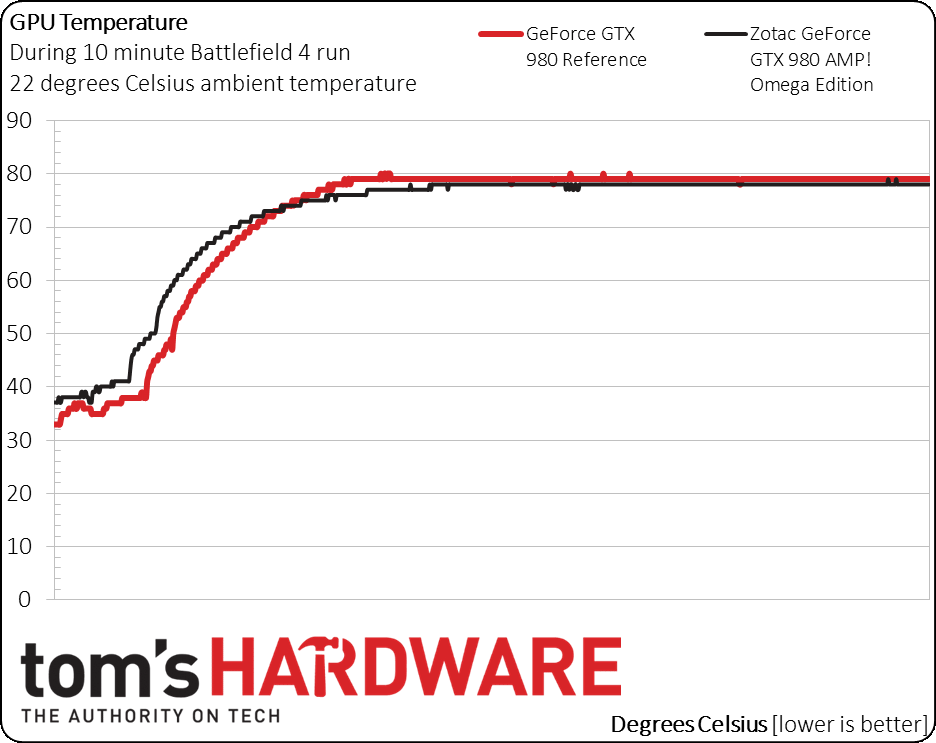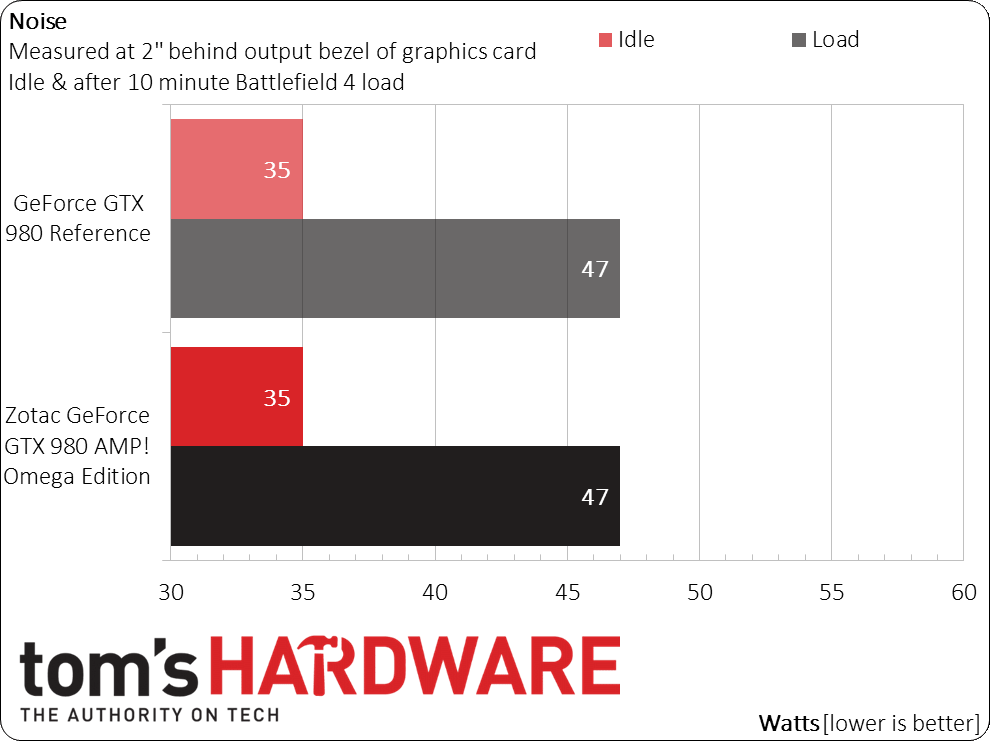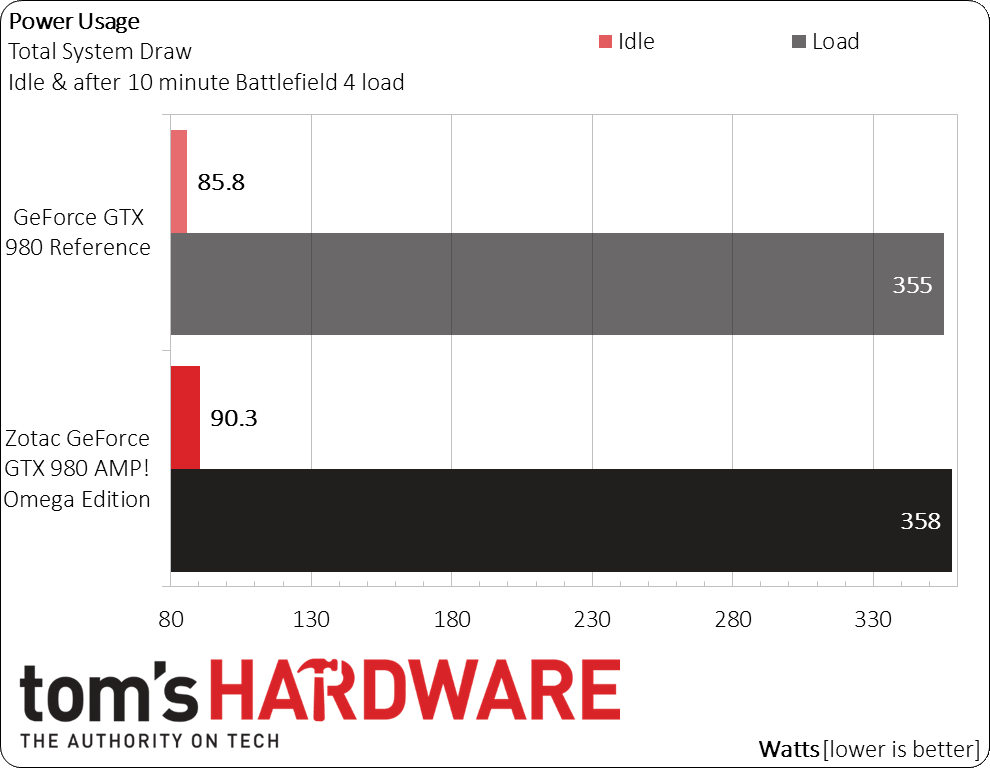Zotac GeForce GTX 980 AMP! Omega Edition Review: The Big Gun
Zotac's GeForce GTX 980 AMP! Omega edition boasts a large aftermarket cooling solution enabling an aggressive factory overclock. How does the board perform right out of its box? How about after we try to push it even harder?
Why you can trust Tom's Hardware
Temperature, Noise And Power Benchmarks
Load Temperature
The first comparison is between Zotac's cooler and the reference GeForce GTX 980. Is this third-party solution an improvement over Nvidia's popular design?
The results are surprisingly close. Zotac's cooler does take a little longer to reach peak temperature, and it beats the stock cooler's maximum by a couple degrees, but our measurements aren't anything to write home about. In fact, the reference cooler's advantage is that it pushes heated air out of the back of your case, while Zotac's cooler recirculates waste heat.
Acoustics
In order to focus on the graphics card's acoustics, we stop all of the system's fans during our measurement. Noise is sampled two inches from the card's output bezel.
The chart starts at 30dB, which is the practical floor of what a human might consider silence. Once again, we see near-identical performance from both solutions. That's not necessarily a bad thing because the reference cooler is quite good, but we expect more from an aftermarket solution.
Power
Finally, let's see how power draw compares to the reference model.
We begin this chart at 80W, which is the approximate power draw of the system at idle minus the graphics card. Zotac's AMP! Omega Edition pulls almost 5W more at idle and about 4W more under a Battlefield 4 load. This certainly doesn't necessitate stepping up to two 8-pin auxiliary power connectors, so let's see what happens when we overclock the card on the next page.
Get Tom's Hardware's best news and in-depth reviews, straight to your inbox.
Current page: Temperature, Noise And Power Benchmarks
Prev Page How We Tested Next Page Overclocking PerformanceDon Woligroski was a former senior hardware editor for Tom's Hardware. He has covered a wide range of PC hardware topics, including CPUs, GPUs, system building, and emerging technologies.


